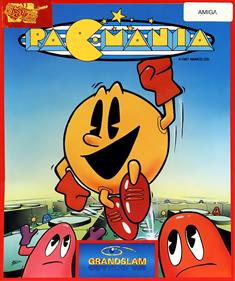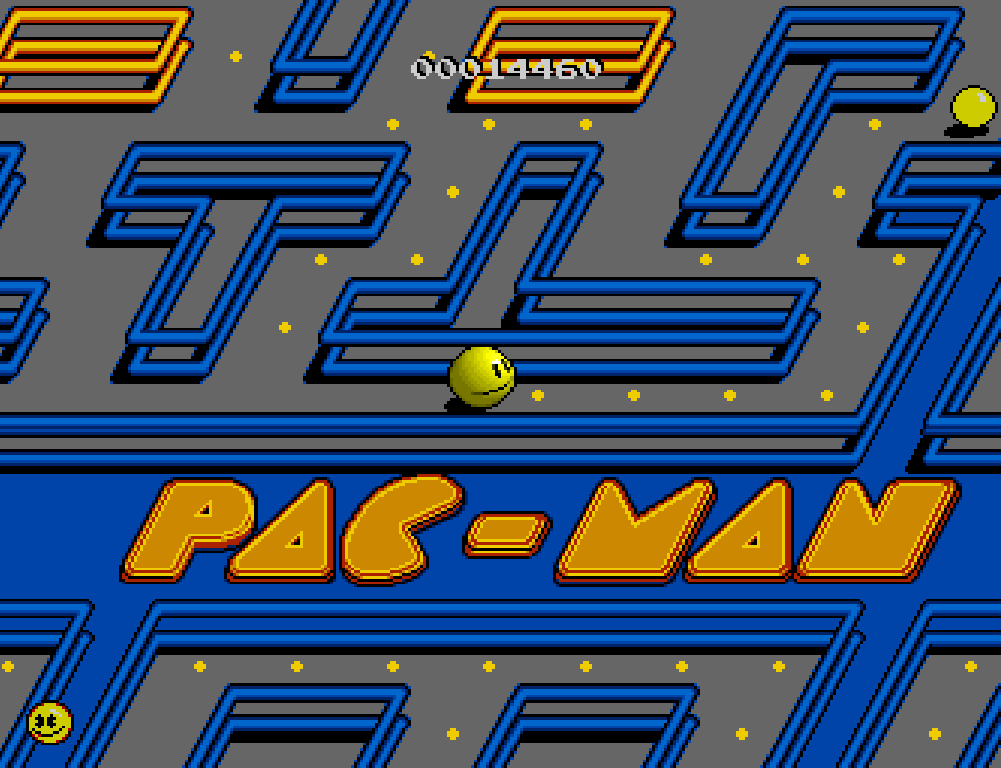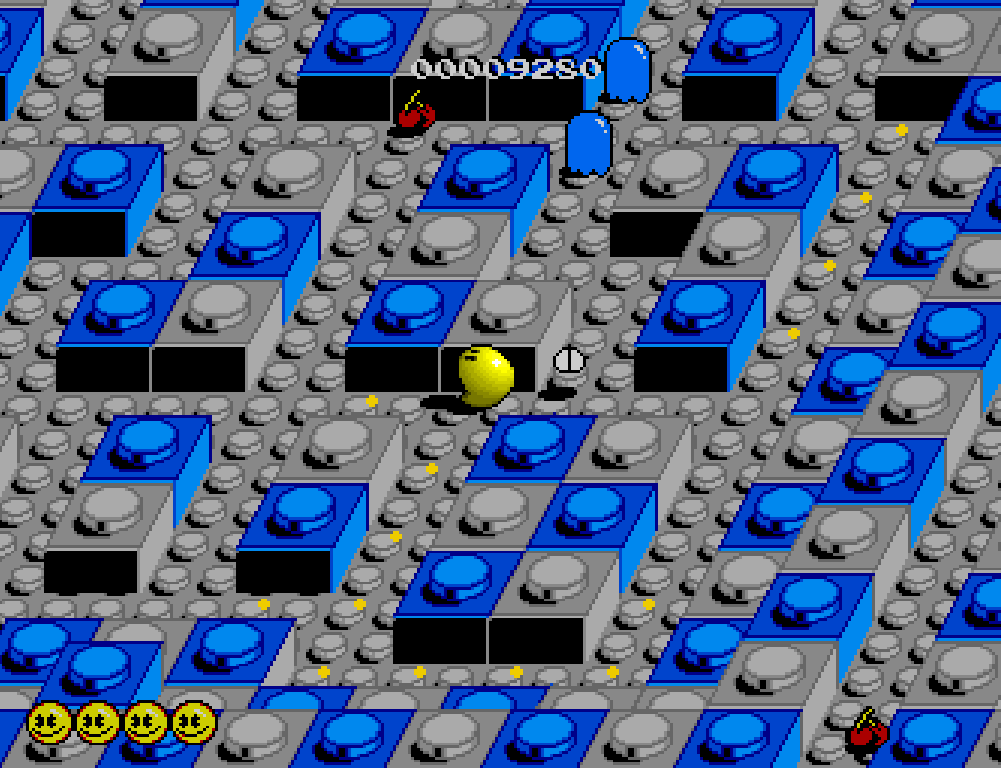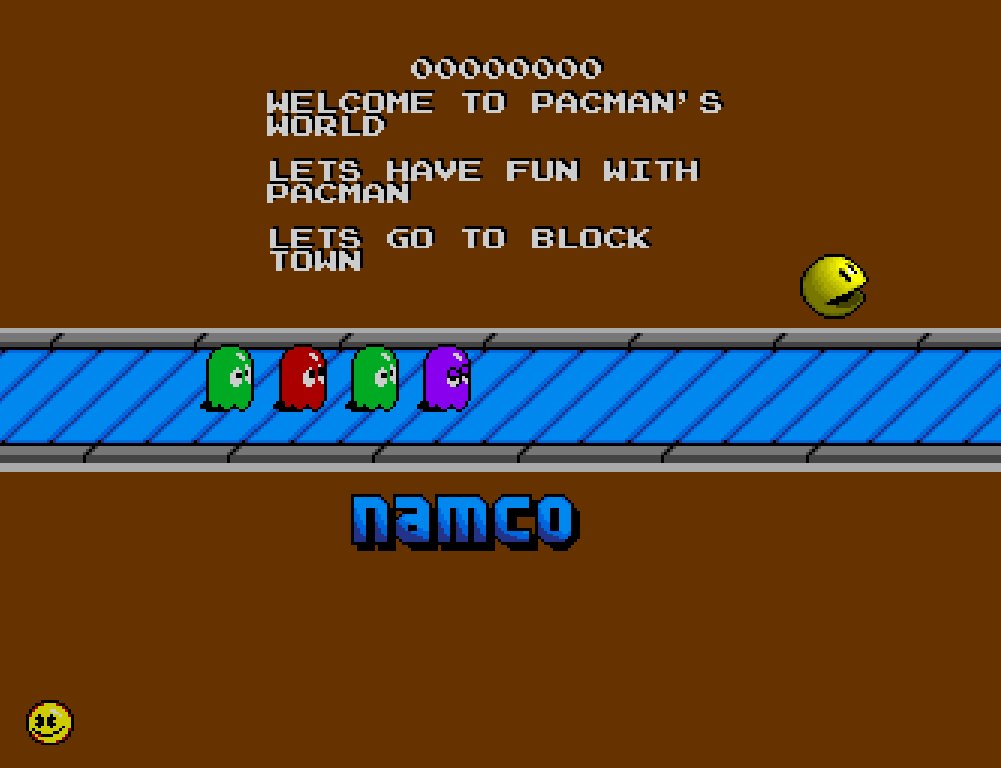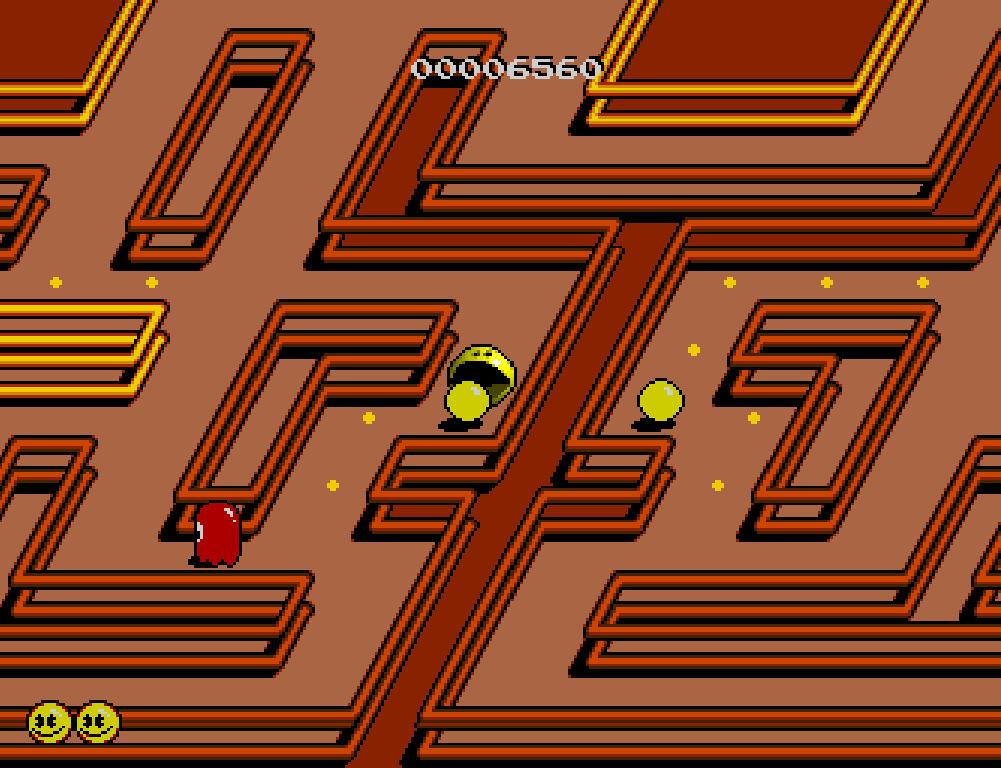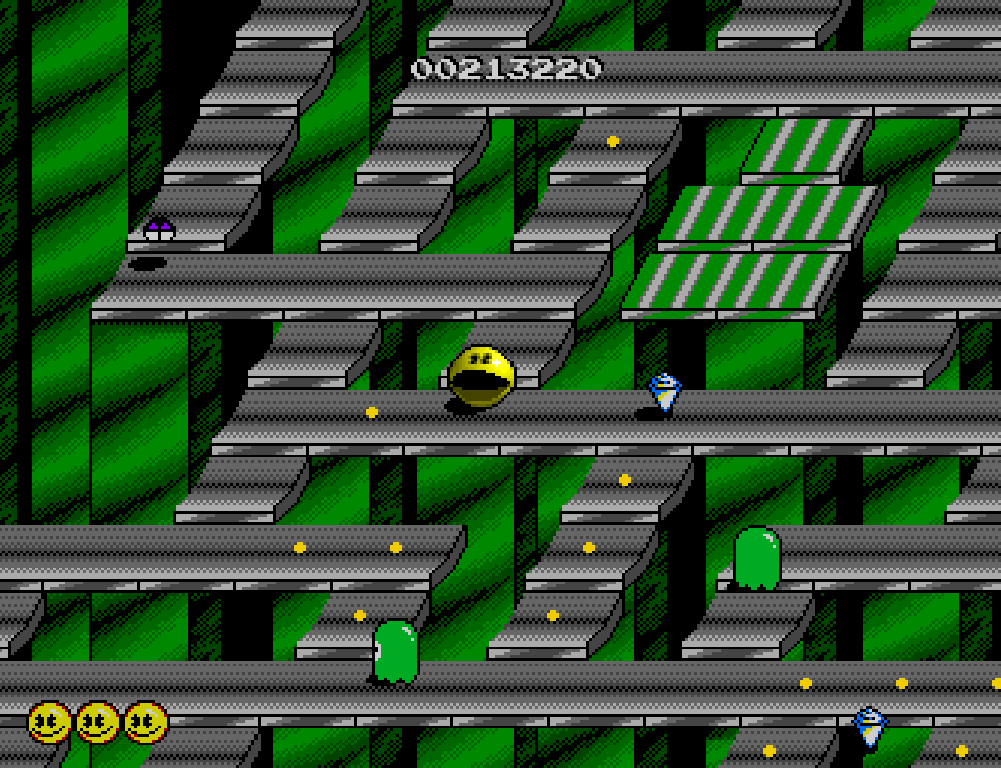PAC-MANIA (AMI)
It’s hard to think of a character more emblematic of the 1980s video gaming scene than Pac-Man. Having lit up the arcades with colourful, addictive and inviting maze games, the yellow pill muncher would feature in no fewer than ten titles between 1980 and 1984. A three-year hiatus followed, culminating in the series’ most significant coin-op evolution to that point. The release of Pac-Mania, the series’ first foray in the 16-bit era, would hit arcades in 1987 and would see familiar gameplay offset met with an entirely new visual style. Gone was the traditional top-down viewpoint, with Namco opting instead for a more cartoon-like, isometric pseudo-3D effect.
The home computers were the first to receive ports and Teque were quick off the mark with their Amiga port in 1988. Whilst some aspects of its design will have caused purists to baulk, Pac-Mania nevertheless felt like a timely refresher for the maze formula, with a slightly more user-friendly approach that I appreciated as a child. It’s a little less frantic (and perhaps a little less free-flowing) than the original, the pacing more sedate, at least to begin with. Diehards may find this removes some of the excitement, but it offers an olive branch for players trying to get to grips with the game.
The visuals are a lot snazzier than its predecessors and Pac-Mania scrolls very smoothly
Completing levels is nothing more complicated than collecting all the yellow pills dotted about each maze. As ever, Pac-Man can collect large pills to turn all his ghostly pursuers blue and therefore, briefly turn the tables by allowing him to gobble them up for points. To aid in your quest, a well-timed tap of the FIRE button will see Pac-Man jump. This may be perceived as watering down the challenge, but by having the chance to leap over foes, it means there’s less of a sense of inevitability to being cornered and losing a life. To be clear though, Pac-Mania isn’t a walkover. Purple ghosts are noticeably speedy and hunt the player concertedly, whilst red ones prove dangerous because of their ability to change direction on a whim, often whilst you’re halfway through trying to jump over them. Make it as far as the Jungly Steps levels and you’ll find green ghosts will mimic Pac-Man’s jumps, meaning you can die through mid-air collisions.
Oddly, should the player choose to start the game at the beginning (rather than skipping ahead to the more challenging levels), it becomes much harder to progress or achieve high scores. Whilst the ghosts are a bit less rapid in the early stages, Pac-Man is much slower. As he trundles around the levels, you’ll find a veritable hunting pack of ghosts able to close large distances quickly, and if you’re stuck in some of the lengthier stretches of the maze, it can be tricky to plot an escape route.
Oddly, should the player choose to start the game at the beginning (rather than skipping ahead to the more challenging levels), it becomes much harder to progress or achieve high scores. Whilst the ghosts are a bit less rapid in the early stages, Pac-Man is much slower. As he trundles around the levels, you’ll find a veritable hunting pack of ghosts able to close large distances quickly, and if you’re stuck in some of the lengthier stretches of the maze, it can be tricky to plot an escape route.
Pac-Mania is a lot of fun to play though. Lots of ghosts means lots of scoring opportunities and the chase nature remains entertaining for quite some time. Beating high scores is really good fun, and whilst the levels inevitably rely on palette swaps once you’ve seen the four chief levels, the gameplay remains engaging fun for a decent period and, despite its simplicity, is one I’ve returned to a number of times.
Its visuals look particularly marvellous. In comparison to the arcade game, the only noticeable difference is the ghosts look a little less clean, though their appearance is still a good fit for the Amiga aesthetic. Gone are the black backgrounds and minimalist appearance of the early eighties instalments and in their place a sequence of layouts that are bold, bright and busy. Block Town puts Lego-like blocks to especially good use, with the isometric perspective lending them a convincing sense of depth, as though Pac-Man is inhabiting a 3D environment. Pacman’s Park is a clean, sleek counterpoint to this, showing off Pac-Mania’s gloriously smooth scrolling. Sandbox meets these designs in the middle somewhat, whilst Jungly Steps makes for the most radical design. It consists of a large, tiered maze that requires a bit more route planning to reach all the pills. These four contrasting styles are super-satisfying to play, and they drum up a sense of variety, with modest differences in the layouts meaning repetition takes longer to set in.
Its visuals look particularly marvellous. In comparison to the arcade game, the only noticeable difference is the ghosts look a little less clean, though their appearance is still a good fit for the Amiga aesthetic. Gone are the black backgrounds and minimalist appearance of the early eighties instalments and in their place a sequence of layouts that are bold, bright and busy. Block Town puts Lego-like blocks to especially good use, with the isometric perspective lending them a convincing sense of depth, as though Pac-Man is inhabiting a 3D environment. Pacman’s Park is a clean, sleek counterpoint to this, showing off Pac-Mania’s gloriously smooth scrolling. Sandbox meets these designs in the middle somewhat, whilst Jungly Steps makes for the most radical design. It consists of a large, tiered maze that requires a bit more route planning to reach all the pills. These four contrasting styles are super-satisfying to play, and they drum up a sense of variety, with modest differences in the layouts meaning repetition takes longer to set in.
There's no shortage of colour on show, and Jungle Steps makes for the most unusual maze layout seen to this point
It was never likely to be remembered in the same echelons as the original, but Pac-Mania for the Amiga represented both an excellent coin-op port from Teque and a gentle evolution of design that suited gaming in the home. Pac-Mania’s attractive, cartoon-like appearance and jump function will have given casual gamers and younger players a foothold the original game didn’t offer, and with increasingly tricky additional speeds and aggressive packs of ghosts, there’s still plenty for fans to get their teeth into.
OTHER PORTS OF NAMCO ARCADE GAMES REVIEWED
